Start Exploring Keyword Ideas
Use Serpstat to find the best keywords for your website
5 Ways To Improve Your Current Website Traffic


Go all-in on mobile optimization
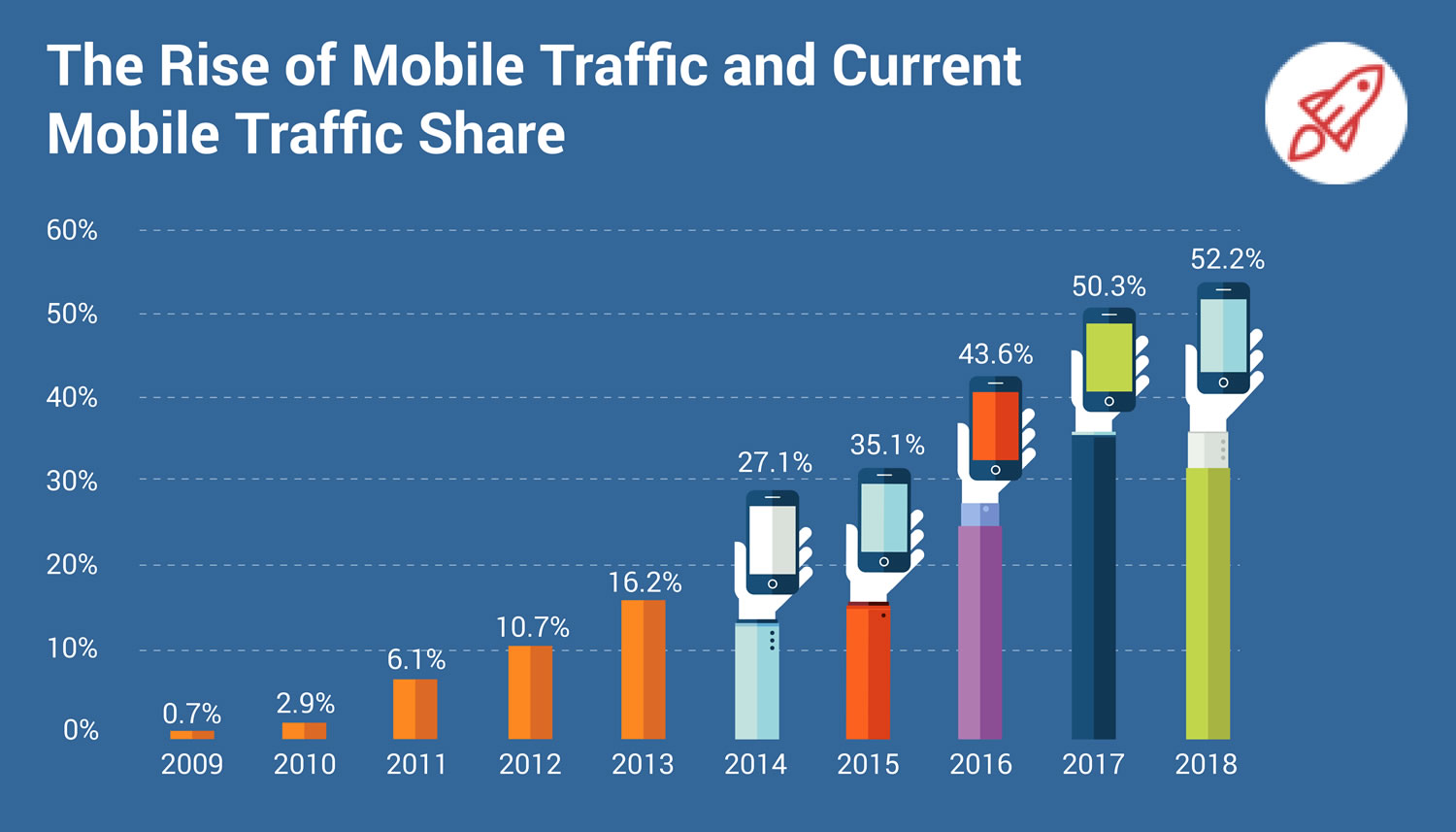
But how does that affect your website traffic? Aren't they coming anyway? Why does it matter what device they're on and what they experience when they get there? Bounce rates. (The rate at which visitors leave your website without viewing a second page). There is a direct relationship between long page load times on mobile and high bounce rates. Think about it. Is your website traffic only restricted to the first page people visit? Or does it also count the second, third and fourth pages? If you haven't optimized your website for mobile visitors, you'll lose them before the first page even loads.
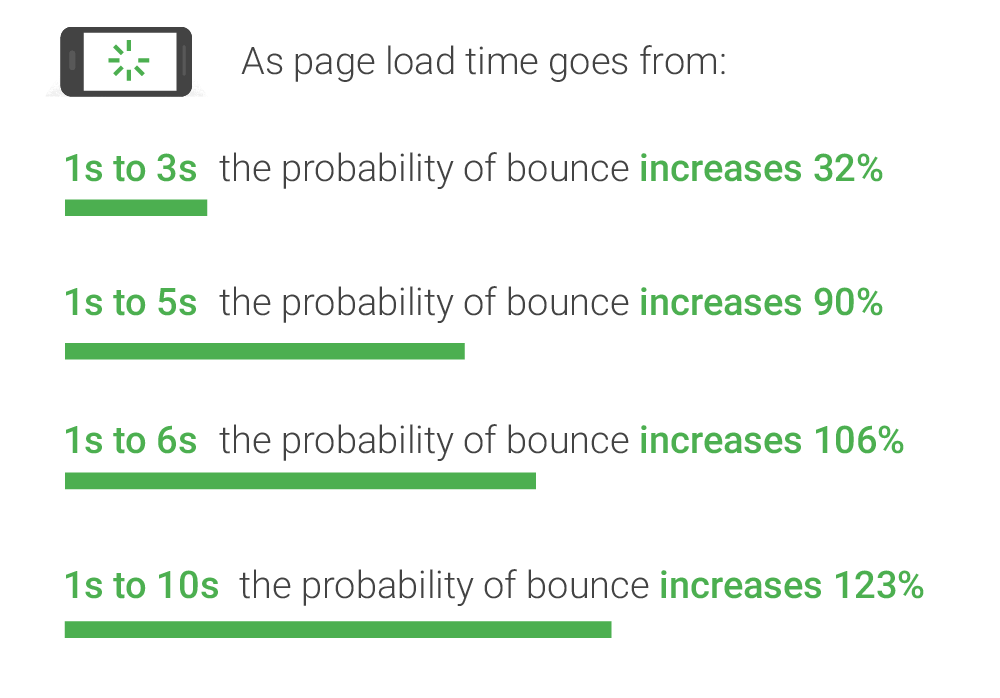
How to optimize for mobile visitors (and improve website traffic at the same time)
The more elements on a page, the slower it takes for that page to load. The slower it takes to load, the more likely it is for a visitor to bounce. Simple. If you care at all about page conversion (which you should, by the way), it's also worth noting that "as the number of elements — text, titles, images — on a page goes from 400 to 6,000, the probability of conversion drops 95%." But, this doesn't mean you have to make boring, standard web-pages. You just need to improve your back-end optimization. For instance, check out this landing page from Housecall Pro:
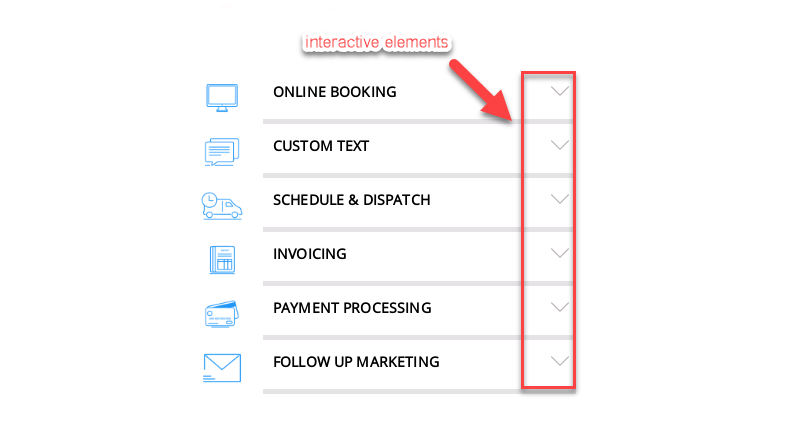
Not only is this seriously frowned upon by Google, but pop-ups and interstitials also give a terrible user experience for mobile visitors. The "close" button is often impossible to find, thу CTA button is often accidentally clicked, and those optimization elements which look great on desktop often take up way more space on mobile than you think they do. There are few website elements which are more detrimental to your bounce rate.
Engaging with a usability-tracking tool will give you valuable insight into how your visitors are engaging with your website. Heatmaps can track where people are clicking on any given page of your website. They can also show you exactly how many people are scrolling through your pages:
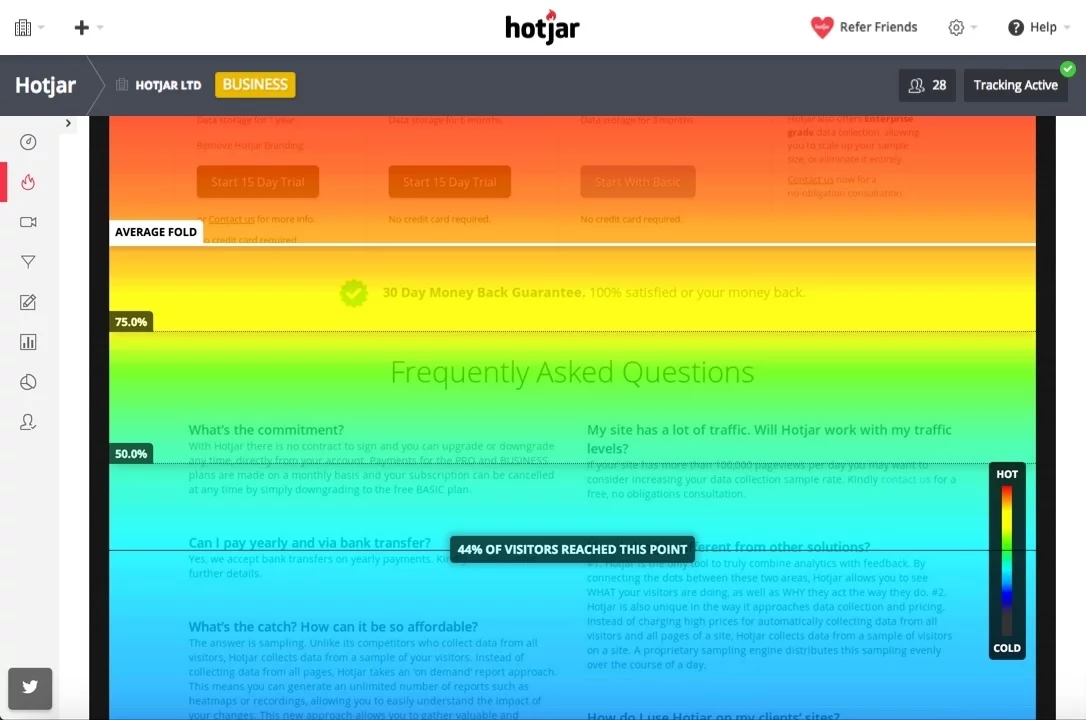
In addition, Google Analytics' User Flow report shows you how your website visitors are navigating your site: where they came from, which pages they navigated in which order, and where they exited.
Also, make sure that your website is free from any bugs. Using a checklist to examine the websites across different platforms and devices goes a long way to ensure that you make a good impression.
In March 2018, Google rolled out mobile-first indexing, which means that they will use the mobile version of the page for indexing and ranking.
Tom Donohoe said "The announcement wasn't a surprise to me because mobile searches have passed desktop searches on Google. Site owners switch to mobile-first design thinking if they want to increase their website traffic in 2019. Ultimately, focusing on creating the same content, structured data and meta tags on both mobile and desktop."
Start creating different types of content
There's no better way to become a content leader than to stop solely creating blog articles and start creating new, interesting and exciting content types.
For instance, Neil Patel is no longer writing content on Neilpatel.com. It's now exclusively video and podcasting:
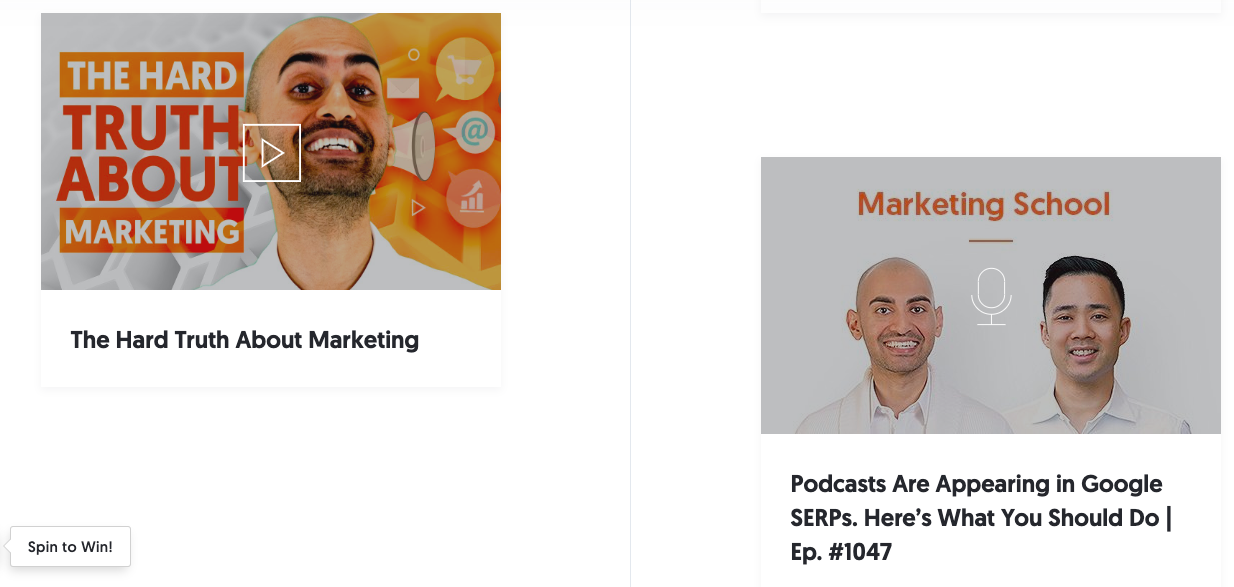
Repurpose existing content into new, comprehensive guides
In fact, with up to 70% of B2B content going unused and unread, you have a huge amount which didn't work the first time and could be recycled.
Create a podcast
Here's how to get started:
Everybody you know has started a podcast. If you're reading this post, you already have a few years of catchup to do. But you can still do it. Podcasts can still improve your website traffic.
But you have to have an angle.
Our recommendation is to go the "Journey to…" route. You need to tell a story. Podcasts like Serial and blogs like Groove's "Journey to 100k" proved that years ago. Come up with an ambitious goal interesting to your prospective customers and website visitors. Then come up with the 6-month plan you're going to execute to achieve that ambitious goal.
Then, every week, get on a mic and talk about what you've done in that week, and why. And be sure you get guests on to talk about their approaches and what worked for them.
You'll need a headset and a microphone. That's really all you need. Actually, a room with good acoustics and a lock on the door is pretty essential as well.
Invest in high-quality visuals and graphics
Web design best practices:
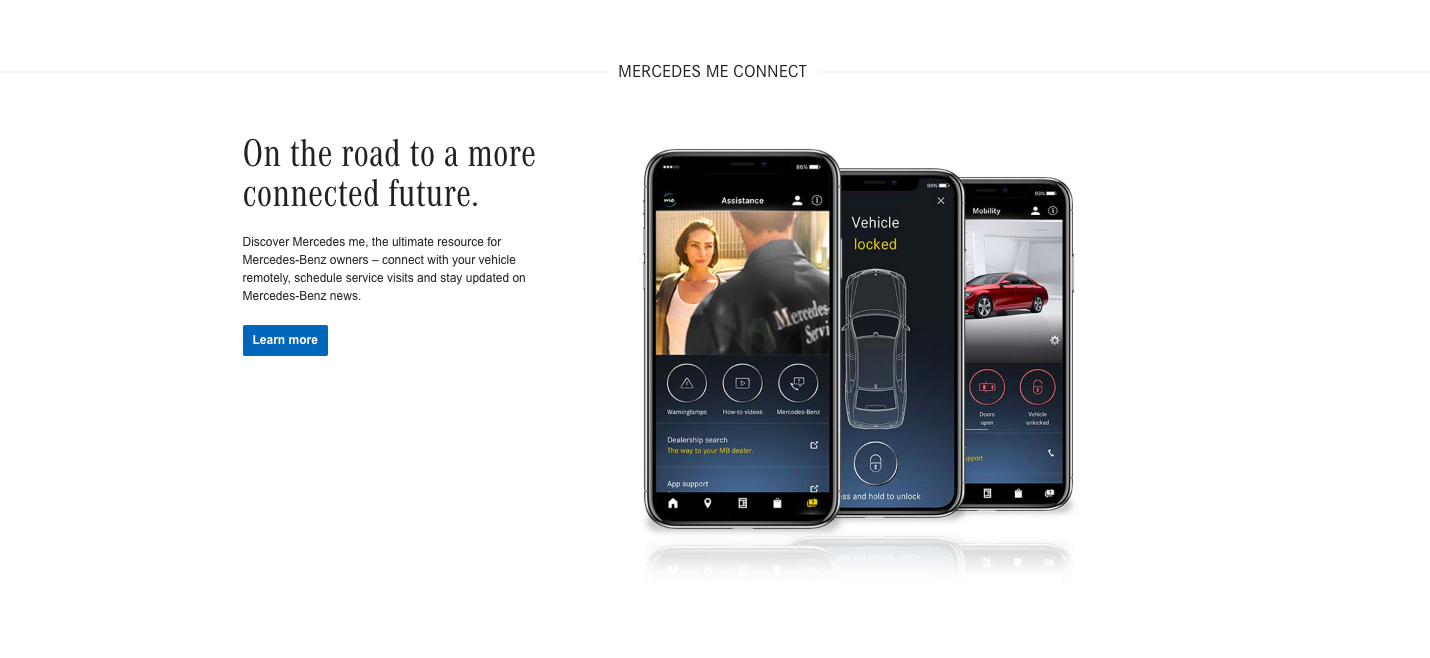
Focus on a specific content niche
For example, if you like local SEO, focus your blog on local SEO and marketing strategies. Trying to be all-encompassing is almost impossible. Not when giants like HubSpot have massive domain authority already.
Niche down. BigCommerce focuses specifically on eCommerce merchant tips. For example, Adventure for less focuses specifically on travel hacking.
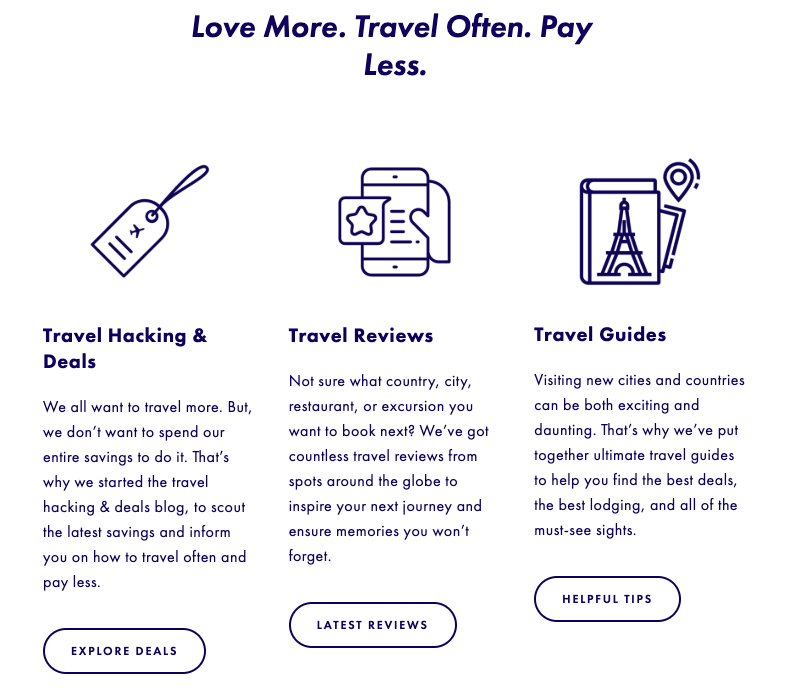
How to find a niche:
Dial in your customer service
You might be sitting there thinking, "how does customer service improve website traffic?" Consider that focusing only on driving new traffic often means you're neglecting your existing customers.
Focusing exclusively on SEO, rather than user experience or customer service, means you'll get a million website visitors and $0 in the bank at the end of the month.
An analogy would be from content marketing:
Let's say you own a business selling data protection software. Your KPI for this month is website traffic. What's the best thing for your marketing team to do? How about writing an article talking about Justin Bieber's shaky relationship with his wife, Hailey? With the right photo, you'll drive thousands of new visitors to your website.
But what's the point?
None of those visitors are remotely interested in data protection software. It's the same with customer service. You could focus only on driving new traffic, but if you don't treat those visitors well, they'll never return.
Joe Daley, CEO at FreelanceMyWay says it's also so important to engage with the users of your website and service, always asking for feedback and ways to improve your service and functionality. You can also hire freelancers to comb your website and features finding ways to improve it.
American Express found that more than 50% of people will switch companies/brands after one bad customer service experience.
And what will that do for your traffic numbers?
Great customer service, on the other hand, drives referral traffic. It boosts your word-of-mouth marketing and is the most important part of retention.
To dial in on your customer service efforts, here are the top customer service must-haves for your site:
Re-evaluate your current martech stack
What's a Martech stack, again?
Martech stacks are defined as "the group of technologies that marketers use to execute, analyze and improve their marketing across the customer lifecycle."
So using the right tools - the right software for SEO, website optimization, mobile optimization, social media marketing and all the rest - can be the difference between a floundering business with no online traffic, and you buying a boat.
The top-reviewed traffic-building for your martech stack:
This article has focused more on those strategies which drive website traffic reliably: site optimization, content specialization, customer service, the right tools, etc.
Anyone can drive traffic. All you need is a click-bait title or a picture of Bieber looking sad.
But driving relevant traffic, reliably? That's a bit harder.
Hopefully, these strategies will help. And if you have any questions, don't hesitate to reach out.
Speed up your search marketing growth with Serpstat!
Keyword and backlink opportunities, competitors' online strategy, daily rankings and SEO-related issues.
A pack of tools for reducing your time on SEO tasks.
Discover More SEO Tools
Backlink Cheсker
Backlinks checking for any site. Increase the power of your backlink profile
API for SEO
Search big data and get results using SEO API
Competitor Website Analytics
Complete analysis of competitors' websites for SEO and PPC
Keyword Rank Checker
Google Keyword Rankings Checker - gain valuable insights into your website's search engine rankings
Recommended posts
Cases, life hacks, researches, and useful articles
Don’t you have time to follow the news? No worries! Our editor will choose articles that will definitely help you with your work. Join our cozy community :)
By clicking the button, you agree to our privacy policy.
